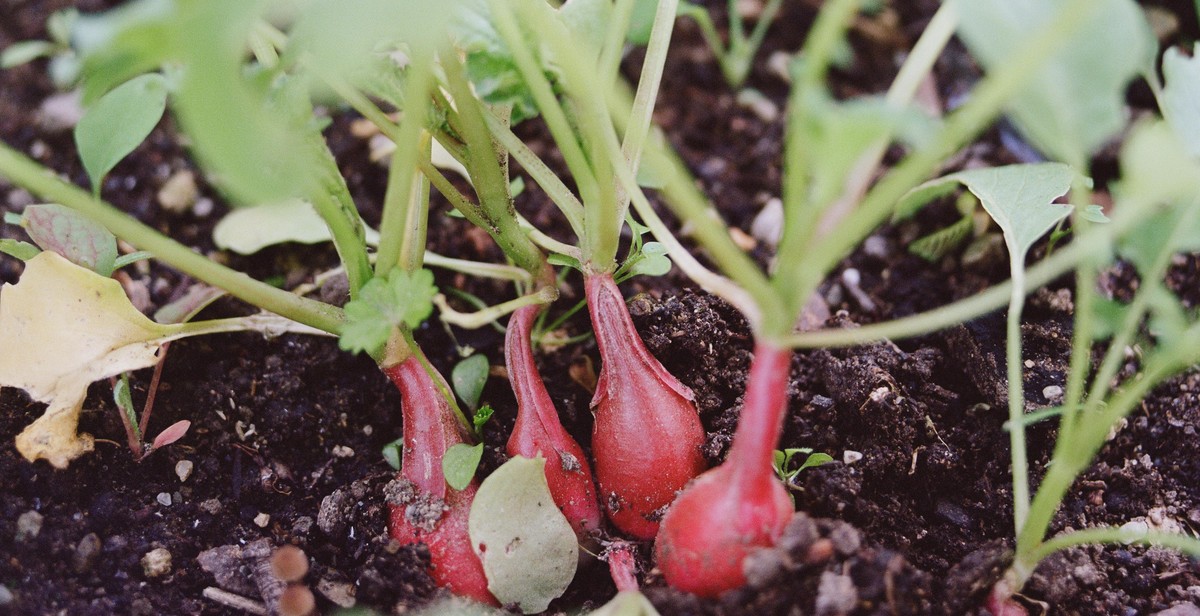How to Make Vegetable Stock from Kitchen Scraps: Reducing Food Waste and Saving Money
Food waste is a major problem worldwide, and it is estimated that about one-third of all food produced globally goes to waste. One way to reduce food waste is by making vegetable stock from kitchen scraps. Vegetable stock is a flavorful and nutritious base for soups, stews, and other dishes, and it can be made using scraps that would otherwise be thrown away.
Making vegetable stock is also a great way to save money, as it eliminates the need to purchase pre-made stock or bouillon cubes. Plus, homemade vegetable stock is healthier and more environmentally friendly than store-bought options, as it does not contain any additives or preservatives.
What are kitchen scraps?
Kitchen scraps are the parts of vegetables that are typically discarded, such as onion skins, carrot tops, and celery leaves. These scraps can be used to make a flavorful and nutritious vegetable stock.
How to make vegetable stock from kitchen scraps
Making vegetable stock from kitchen scraps is a simple process that involves simmering the scraps in water with herbs and spices. The resulting stock can be used immediately or stored in the refrigerator or freezer for later use.
- Collect kitchen scraps in a container in the freezer until you have enough to make a batch of stock.
- Place the scraps in a large pot and cover with water.
- Add herbs and spices of your choice, such as bay leaves, thyme, and black peppercorns.
- Bring the mixture to a boil, then reduce the heat and let it simmer for 45-60 minutes.
- Strain the stock through a fine-mesh sieve and discard the solids.
Vegetable stock made from kitchen scraps is a simple and sustainable way to reduce food waste and save money in the kitchen. Plus, it adds flavor and nutrition to your favorite dishes.

Why Make Vegetable Stock from Kitchen Scraps?
Reducing food waste and saving money are two of the main reasons to make vegetable stock from kitchen scraps. When we throw away vegetable scraps, we are not only wasting food, but we are also wasting money. By using those scraps to make a flavorful and nutritious vegetable stock, we can save money on buying pre-made stock or bouillon cubes.
Reduce Food Waste
In the United States alone, it is estimated that up to 40% of food goes to waste. This is a staggering amount of food that could be used to feed people who are hungry. By making vegetable stock from kitchen scraps, we can reduce the amount of food waste that ends up in landfills. Vegetable scraps such as onion skins, carrot tops, and celery leaves can all be used to make a delicious and healthy stock.
Save Money
Buying pre-made stock or bouillon cubes can be expensive, especially if you cook with it frequently. By making your own vegetable stock from kitchen scraps, you can save money on your grocery bill. Plus, you can control the ingredients that go into your stock and avoid added preservatives or chemicals.
Another way to save money is by using vegetable scraps that you would normally throw away. For example, the tops of carrots and beets, the stems of herbs, and the ends of onions can all be used to make stock. By using these scraps instead of throwing them away, you are getting more value out of your produce and reducing your overall food costs.
| Vegetable | Scraps to Use |
|---|---|
| Carrots | Tops, peels, ends |
| Celery | Leaves, ends |
| Onions | Skins, ends |
| Mushrooms | Stems, trimmings |
| Garlic | Skins, ends |
| Herbs | Stems, leaves |
Overall, making vegetable stock from kitchen scraps is a great way to reduce food waste and save money. It is also a healthy and flavorful alternative to pre-made stock or bouillon cubes. So, next time you’re cooking with vegetables, don’t throw away those scraps! Save them to make a delicious and nutritious vegetable stock.

What Vegetable Scraps to Use for Stock
The great thing about making vegetable stock from kitchen scraps is that you can use almost any vegetable you have on hand. However, some vegetables are more suitable for stock-making than others. Here are some of the best vegetable scraps to use for making a flavorful and nutritious stock:
1. Onion and Garlic Skins
Don’t throw away those onion and garlic skins! They are packed with flavor and will add depth to your vegetable stock. You can also use the root ends of the onions.
2. Carrots
Carrots are a staple in most kitchens, and their tops and peels can be used to make a delicious stock. The greens are especially flavorful and will add a unique taste to your stock.
3. Celery
The leaves and ends of celery stalks are often discarded, but they are perfect for adding flavor to your stock. They contain a natural compound called 3-n-butylphthalide, which gives celery its distinctive aroma and flavor.
4. Leeks
Leeks are often used in soups and stews, but their green tops are usually discarded. Don’t throw them away! They are perfect for adding flavor to your vegetable stock.
5. Mushroom Stems
When you use mushrooms in your cooking, don’t throw away the stems. They are packed with flavor and will add a rich, earthy taste to your stock.
6. Herb Stems
When you use fresh herbs in your cooking, don’t discard the stems. They are full of flavor and will add a delicious taste to your stock. Some herbs that work well in stock include thyme, parsley, and rosemary.
7. Other Vegetables
Other vegetables that work well in vegetable stock include potato peels, corn cobs, bell peppers, and tomatoes. Just make sure to avoid using any vegetables that have gone bad or are moldy.
| Vegetable | Scraps to Use |
|---|---|
| Onion | Skins and root ends |
| Garlic | Skins |
| Carrots | Tops and peels |
| Celery | Leaves and ends |
| Leeks | Green tops |
| Mushrooms | Stems |
| Herbs | Stems |
| Potatoes | Peels |
| Corn | Cobs |
| Bell peppers | Core and seeds |
| Tomatoes | Scraps |

How to Make Vegetable Stock
Making vegetable stock from kitchen scraps is an easy and effective way to reduce food waste and save money. Here are the ingredients and instructions you’ll need to make your own vegetable stock:
Ingredients
- 2-3 cups of vegetable scraps (carrot peels, onion ends, celery leaves, etc.)
- 8 cups of water
- 1 bay leaf
- 1 teaspoon of whole peppercorns
- 1-2 cloves of garlic (optional)
Instructions
- Collect vegetable scraps in a container or bag and store them in the freezer until you have enough to make stock.
- In a large pot, combine the vegetable scraps, water, bay leaf, peppercorns, and garlic (if using).
- Bring the mixture to a boil, then reduce the heat and let it simmer for about an hour.
- After an hour, strain the stock through a fine-mesh strainer or cheesecloth into a bowl or large measuring cup.
- Discard the solids and let the stock cool before transferring it to airtight containers for storage in the refrigerator or freezer.
Use your homemade vegetable stock in soups, stews, sauces, and more to add flavor and nutrition to your dishes. Enjoy!

Uses for Vegetable Stock
Vegetable stock is not only a delicious base for soups and stews, but it can also be used in a variety of other dishes. Here are some creative ways you can use your homemade vegetable stock:
1. Risotto
Replace water with vegetable stock when making risotto for a richer, more flavorful dish.
2. Grains
Cooking grains such as rice, quinoa, and couscous in vegetable stock adds depth of flavor to the dish and makes it more nutritious.
3. Sauces and Gravies
Use vegetable stock as a base for sauces and gravies, instead of water or broth, to add a more complex flavor profile.
4. Mashed Potatoes
Replace some or all of the milk or cream in your mashed potatoes with vegetable stock for a healthier, lower-fat version.
5. Braising Vegetables
Braising vegetables in vegetable stock adds flavor and helps to keep them moist and tender.
6. Marinades
Use vegetable stock as a base for marinades to add flavor and tenderize meat, tofu, or vegetables.
7. Cocktails
Vegetable stock can be used to make savory cocktails, such as a Bloody Mary or a vegetable-infused gin and tonic.
8. Freezing
Make a big batch of vegetable stock and freeze it in ice cube trays. You can then use the cubes to add flavor to sauces, gravies, and other dishes.
9. Sipping
Vegetable stock can be sipped on its own as a healthy and flavorful alternative to tea or coffee.
10. Pet Food
If you have pets, vegetable stock can be added to their food to make it more palatable and nutritious.
| Uses | Benefits |
|---|---|
| Substitute for water in risotto | Richer, more flavorful dish |
| Cooking grains | More nutritious and flavorful |
| Base for sauces and gravies | More complex flavor profile |
| Replace milk or cream in mashed potatoes | Healthier, lower-fat version |
| Braising vegetables | Moist and tender |
| Base for marinades | Flavor and tenderize meat, tofu, or vegetables |
| Making savory cocktails | Unique and flavorful drinks |
| Freezing in ice cube trays | Convenient and easy to use |
| Sipping on its own | Healthy and flavorful alternative to tea or coffee |
| Adding to pet food | More palatable and nutritious |

Conclusion
Learning how to make vegetable stock from kitchen scraps is an excellent way to reduce food waste and save money. With just a few simple steps, you can turn your leftover vegetable scraps into a flavorful and nutritious broth that can be used in a variety of recipes.
Not only is making vegetable stock from kitchen scraps an eco-friendly and budget-friendly option, but it’s also incredibly easy. All you need are some vegetable scraps, water, and a few herbs and spices to create a delicious and versatile stock.
By making your own vegetable stock, you can also control the ingredients and avoid unnecessary additives and preservatives found in store-bought broths. Plus, you can customize the flavor to your liking by adding different herbs and spices.
Next time you’re cooking with vegetables, don’t throw away those scraps! Instead, save them in a container in the freezer and use them to make your own homemade vegetable stock. It’s a simple and sustainable way to make the most out of your food and reduce waste.
- Reuse and recycle your vegetable scraps to create a flavorful and nutritious broth.
- Avoid unnecessary additives and preservatives found in store-bought broths.
- Customize the flavor of your vegetable stock to your liking by adding different herbs and spices.
- Reduce food waste and save money by making your own vegetable stock from kitchen scraps.
Give it a try and see how easy it is to make your own vegetable stock from kitchen scraps. Your taste buds (and your wallet) will thank you!
